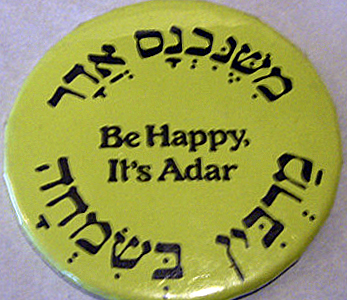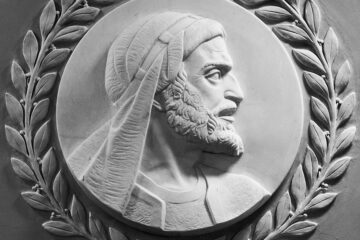Doubling joy

By Rabbi Shmuel Klatzkin, Chabad of Greater Dayton
For the second time in three years, we are in a leap year. Our Jewish calendar is not just trying to stay in sync with the sun, as with the Gregorian and Julian calendars, but with the moon as well. Running shorter months, we have to add an extra month every so often so that Pesach will still wind up coming in the spring, as the Torah requires.
Purely for the purpose of balancing the number of days, any month could have been chosen for this purpose, or a new month invented. Had we doubled the month of Tammuz or Cheshvan, the numbers would still have come out the same, and the goal of staying in the solar sync achieved.

The month we chose to double, however, was Adar. This year, as with two years ago, instead of having just one month of Adar on our calendar, we have two, called simply First and Second Adar.
The Talmud and subsequent rabbinic literature has a fair amount of discussion on which of these two months of Adar is the prime Adar and which is merely secondary.
It was decided long ago that Purim is mainly celebrated in Second Adar, though there is a small celebration on the same day of First Adar, called appropriately enough, Purim Katan, Little Purim.
But there are some interesting questions that were not so quickly resolved. For instance, for those born in Adar in a regular year, in which month should they celebrate their birthday? Or suppose if in a legal document written during a leap year, one forgot to indicate which of the months it was and simply wrote Adar – would the document still be valid?
One of the more interesting discussions centers on a teaching in the Talmud (Taanit 29a) that “when Adar comes in, we increase in joy.”
There is something that is unusual about this teaching, and requires further explanation. For joy is something hugely important in Jewish teaching, back to our earliest and most basic texts.
“Serve God in joy” says the Psalm. Deuteronomy goes so far as to say that undesirable consequences come from lack of joy, even if one had been compliant: “Because you did not serve God with joy and a good heart.”
Maimonides summarizes the value of joy as legal rulings: in the laws about Sukkot, he writes, “The joy a person has in doing mitzvot (commandments) and in loving God as He commanded is in itself a great service.”
In the laws of character traits, Maimonides makes clear what kind of emotion it is that we are talking about: “A person should not be overly elated and laugh (excessively), nor be sad and depressed in spirit. Rather, he should be joyous at all times, with a friendly countenance.”
This is not a forced, artificial emotion, but something so capable of being sustained that it is possible to be in this state at all times.
That being so, why does the Talmud single out Adar? If we should be joyous continuously, how then does Adar differ?
In commenting on the Talmud’s teaching, Rashi tells us with his usual brevity why it is we specify this time — the onset of Adar. He writes: “Because these were days of miracles for Israel: Purim and Pesach.”
What no doubt has caught your eye is the mention of Pesach, which comes not in Adar, but in the next month, Nisan. How is citing Pesach relevant to the matter at hand?
We can understand this by looking at the different qualities of the holidays. The story of Pesach is one of miracles from above, “with signs and wonders,” God took us out of Egypt. Such open miracles are noticeably absent in the Purim story, in which God’s name does not even appear.
The rabbis find the theme of the naturalness of the events in Purim profoundly significant. So much so, that they make the amazing claim that at Purim, we willingly accepted the Torah for the first time. For at the time of the
Exodus, we accepted it only under the compulsion of the supernatural; but at Purim, with God hidden, we chose on our own to accept our role and to stand proudly in it, come what may.
That choice, Rashi is hinting, had an effect not confined to Purim — it affected even Pesach. Being willing participants, joining in Jewish life out of love rather than just out of compulsion — that results not just in the steady joy that is the basis of decent character, but of a joy that we can cause to increase, because it is profoundly a part of us.
As the text says of Purim, it is the joy of turning darkness into light, seeing our own inner darkness being revealed as a cause of joy — our difficulties and suffering are infused with meaning, as we discover our own ability to change the world by the moral courage of proud Jewish commitment.
There is a bit of a debate here too: should this period of extra joy begin only in Second Adar, when Purim actually falls, or in the first? The consensus is from the first. What better way to increase joy than to double it?
If there is doubt, let us err on the side of joy, especially a joy that’s in our power to release and increase. And may we speedily see the day of which Isaiah prophesies, in which we “come with shouting to Zion, crowned with joy everlasting.”
To read the complete March 2016 Dayton Jewish Observer, click here.




